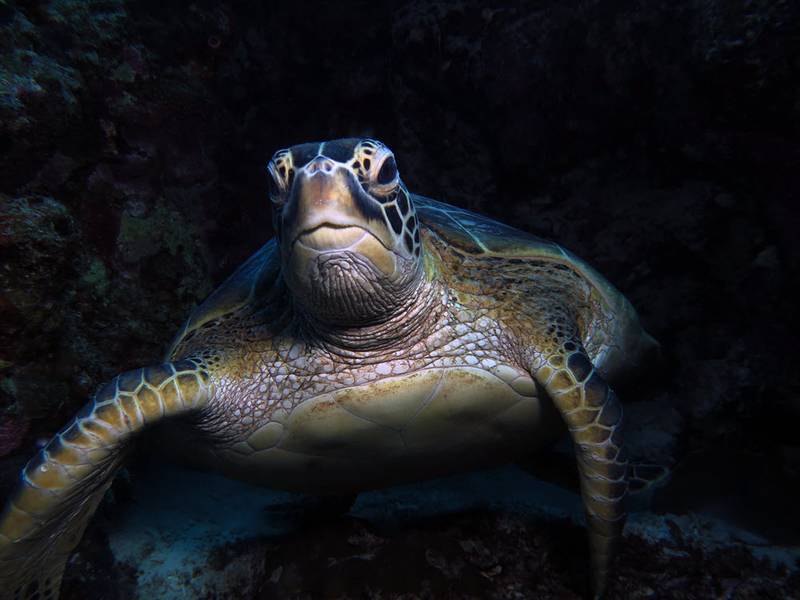Australia has a reputation for naming animals based on their color: the red belly black snake, the red necked wallaby. More pertinent to the discussion of offshore carbon capture and storage (CCS), there’s the green sea turtle, pygmy blue whale and the dusky sea snake.
It’s these three species that environmental groups say are amongst those under threat at Scott Reef in Western Australia if Woodside’s Browse CCS project goes ahead.
The environmental groups call it “carbon dumping” rather than CCS in what could be interpreted as blackwashing, in contrast to the greenwashing that they are accusing Woodside of doing.
The news is discussed this week in Marine Technology News: The Australian government’s call for two weeks of public consultation on Woodside’s plans started on January 2, and this timing met with opposition from Greenpeace and the Australian Greens party. The Greens said the plans were released while many Australians were off work for summer holidays.
Acting Greens Leader Senator Sarah Hanson Young said: “Woodside’s blatant attempt at greenwashing their polluting projects will not stop extinctions and will not protect our oceans and climate.”
The risks include CO2 toxicity, earthquakes, leakage and the impact of ongoing seismic surveys.
Geoff Bice, WA Campaign Lead at Greenpeace Australia Pacific, called CCS an expensive distraction that fossil fuel corporations use to greenwash their emissions. “Communities across Australia and the Pacific are experiencing the worsening impacts of the climate crisis. We must invest in the proven climate solutions we have right now — that is renewable wind and solar energy backed by storage.”
2024 was the hottest year on record, and similar climate concerns are being voiced around the world. This week, Alice Harrison, Head of Fossil Fuels Campaigning at Global Witness, directed her LinkedIn post about the DearTomorrow project to the CEOs of Exxon, Shell, BP, TotalEnergies and Chevron. “I’ve just drafted a letter to my daughters. They’re three and five now – I want them to open this letter in 2050, when they’ll be 28 and 30…
“Fossil fuels are cooking the planet and super-charging extreme weather and the sorts of droughts that are making wildfires in Los Angeles and countless other places more frequent and more intense. I’m trying really hard to understand how you can know all of this (the fossil fuel industry has known this for decades) and still show up to work every day.
“Perhaps if you sat down and wrote a letter to your kids you might feel differently?”
Back in Australia, the Guardian reports a Woodside spokesperson as saying the Browse gas project aligns with “key policy statements of both the Western Australian and Australian governments which recognize the pivotal role of natural gas in Australia to 2050 and beyond.”
Australia is not alone in that. In December, Norway awarded two CO2 storage permits in the North Sea, and early this year, the Danish Energy Agency launched its fourth licensing round for exploration and CO2 storage in three areas near the Danish coast. Among other projects globally, a 1,000km CO2 pipeline is planned to take landside CO2 from Belgium and France to storage wells in the Norwegian continental shelf.
Projects are also expected in the US. Writing in the Nov/Dec issue of Offshore Engineer, Ruaraidh Montgomery, Global Head of Research at Welligence Energy Analytics, said: “Under the second President Trump term, the United States is expected to prioritize oil and gas, focusing on reducing regulations. But we expect existing incentives, such as those from the Inflation Reduction Act, to remain, and the permitting processes for ongoing CCS projects may be expedited.”
In 1996, Norway’s Sleipner became the world’s first commercial CO2 storage project. Australia currently has two operational CCS projects: Gorgon under Barrow Island in Western Australia and Moomba in South Australia.
Greenpeace says CCS has not been proven to work at the scale required to tackle the climate crisis anywhere in the world.
However, as Geoscience Australia points out, the scientific consensus is that it will be almost impossible to reach net-zero emissions by 2050 without a significant global scale up of CCS. And CCS is one of the few solutions available for reducing emissions from heavy industries such as aluminium, steel, cement, fertiliser and chemical manufacturing, as well as for blue (fossil fuel plus CCS) hydrogen production. CCS also underpins direct air capture and storage which is expected to play an increasingly important role in meeting the global carbon budget.
Whether it’s greenwashing or blackwashing, the role of CCS in meeting climate objectives will therefore continue – regardless of whether or not green sea turtle habitats are put at risk.

